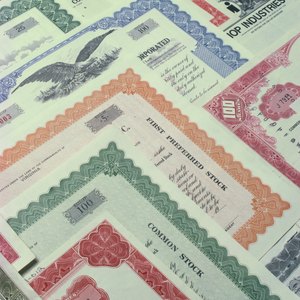
Use a savings bond to pay for educational expenses and avoid paying tax on the interest that the bond earned. Since the owner of the bond must be age 24 or over when the savings bond is issued, put the bond in your name, not a minor child's, even if you plan to use the bond to pay for the child's educational expenses. You can only use the savings bond to pay the educational expenses of your dependents, your spouse or yourself.
Cash in the savings bond at your local financial institution, in the same way you would cash a check, by signing the bond. You do not need an account at a particular bank in order to redeem the bond. If you do not have an account, have identification ready, such as your driver's license. Another option is to set up an account at the U.S. Department of the Treasury website, known as TreasuryDirect (treasurydirect.gov). You can link your bonds to your checking account and cash them electronically.
List the serial number, date issued and face value of each savings bond you are cashing on IRS Form 8818. Form 8818 gives you written proof of each bond that you've cashed.
Use the money from the bond to pay for tuition and fees that contribute to a degree, such as laboratory fees at a school that participates in the federal student aid program. Save all receipts and canceled checks that show you have used the money to pay for education purposes.
Fill out either Form 1040 or 1040A when it is time to file your taxes. You cannot claim the exclusion if you use Form 1040EZ. You will also need to complete Schedule B, Interest and Ordinary Dividends, and Form 8815, Exclusion of Interest From Series EE and I U.S. Savings Bonds Issued After 1989. List the amount of interest you've earned from the bonds on Schedule B and use Form 8815 to figure out how much of that interest you can exclude from your taxable income.
Tips
As of 2010, your adjusted gross income must be less than $81,500 if you are single or $135,100 if you are married and file your taxes jointly, in order for you to claim the interest exclusion for using a savings bond to pay for education.
References
- Bankrate; How to Cash In Savings Bonds; Dorothy Rosen; 2005
- Bankrate; Educated Use of Savings Bond Can Yield Tax Break; Kay Bell; 2010
- Dept. of Treasury; Using Savings Bonds for Education; 2011
- Dept. of Treasury; Learn How to Purchase Treasury Securities; 2011
- TreasuryDirect.gov. "Series I Savings Bonds." Accessed Feb. 7, 2020.
- TreasuryDirect.gov. "Tax Considerations for I Bonds." Accessed Feb. 7, 2020.
- TreasuryDirect.gov. "Series I Savings Bonds FAQs." Accessed Feb. 7, 2020.
- TreasuryDirect.com. "Treasury Inflation-Protected Securities (TIPS)." Accessed Feb. 7, 2020.
Tips
- As of 2010, your adjusted gross income must be less than $81,500 if you are single or $135,100 if you are married and file your taxes jointly, in order for you to claim the interest exclusion for using a savings bond to pay for education.
Writer Bio
Based in Pennsylvania, Emily Weller has been writing professionally since 2007, when she began writing theater reviews Off-Off Broadway productions. Since then, she has written for TheNest, ModernMom and Rhode Island Home and Design magazine, among others. Weller attended CUNY/Brooklyn college and Temple University.

